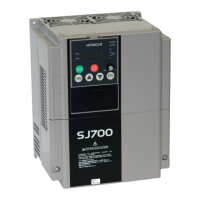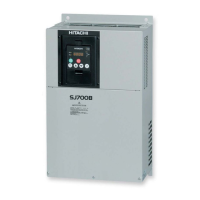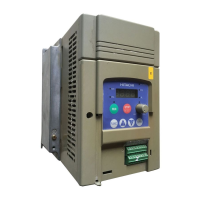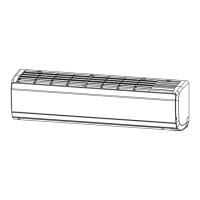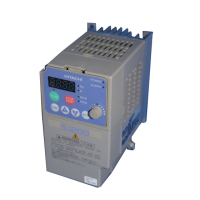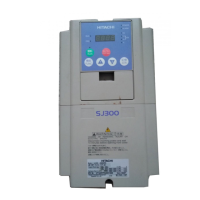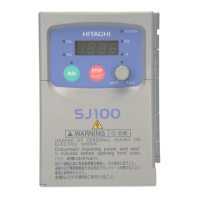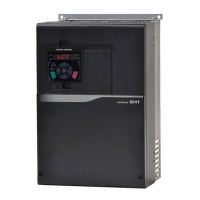Chapter 2 Installation and Wiring
2-4
(9) Reduction of enclosure size
If you mount the inverter inside an enclosure such that the heat sink of the inverter is positioned outside the
enclosure, the amount of heat produced inside the enclosure can be reduced and likewise the size of the enclosure.
Mounting the inverter in an enclosure with the heat sink positioned outside requires an optional dedicated special
metal fitting. To mount the inverter in an enclosure with the heat sink positioned outside, cut out the enclosure
panel according to the specified cutting dimensions. The cooling section (including the heat sink) positioned
outside the enclosure has a cooling fan. Therefore, do not place the enclosure in any environment where it is
exposed to waterdrops, oil mist, or dust.
(10) Approximate loss by inverter capacity
Efficiency at rated output (%)
Efficiency at rated output (%)
2.1.2 Backing plate
(1) For models with 30 kW or less capacity
On the backing plate, cut the joints around each section to be cut off with cutting pliers or a cutter, remove them,
and then perform the wiring.
(2) For the models with 37 kW to 75kW
1) For wiring without using conduits
Cut an X in each rubber bushing of the backing plate with cutting pliers or a cutter, and then perform the wiring.
2) For wiring using conduits
Remove the rubber bushings from the holes to be used for wiring with conduits, and then fit conduits into the
holes.
Note: Do not remove the rubber bushing from holes that are not used for wiring with a conduit.
If a cable is connected through the plate hole without a rubber bushing and conduit, the cable insulation may
be damaged by the edge of the hole, resulting in a short circuit or ground fault.
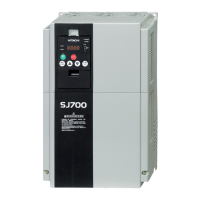
